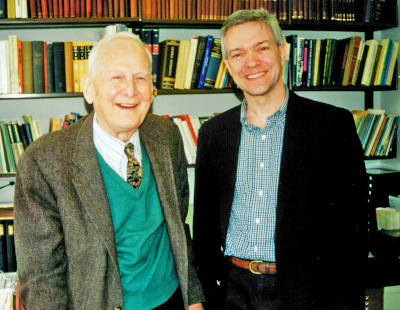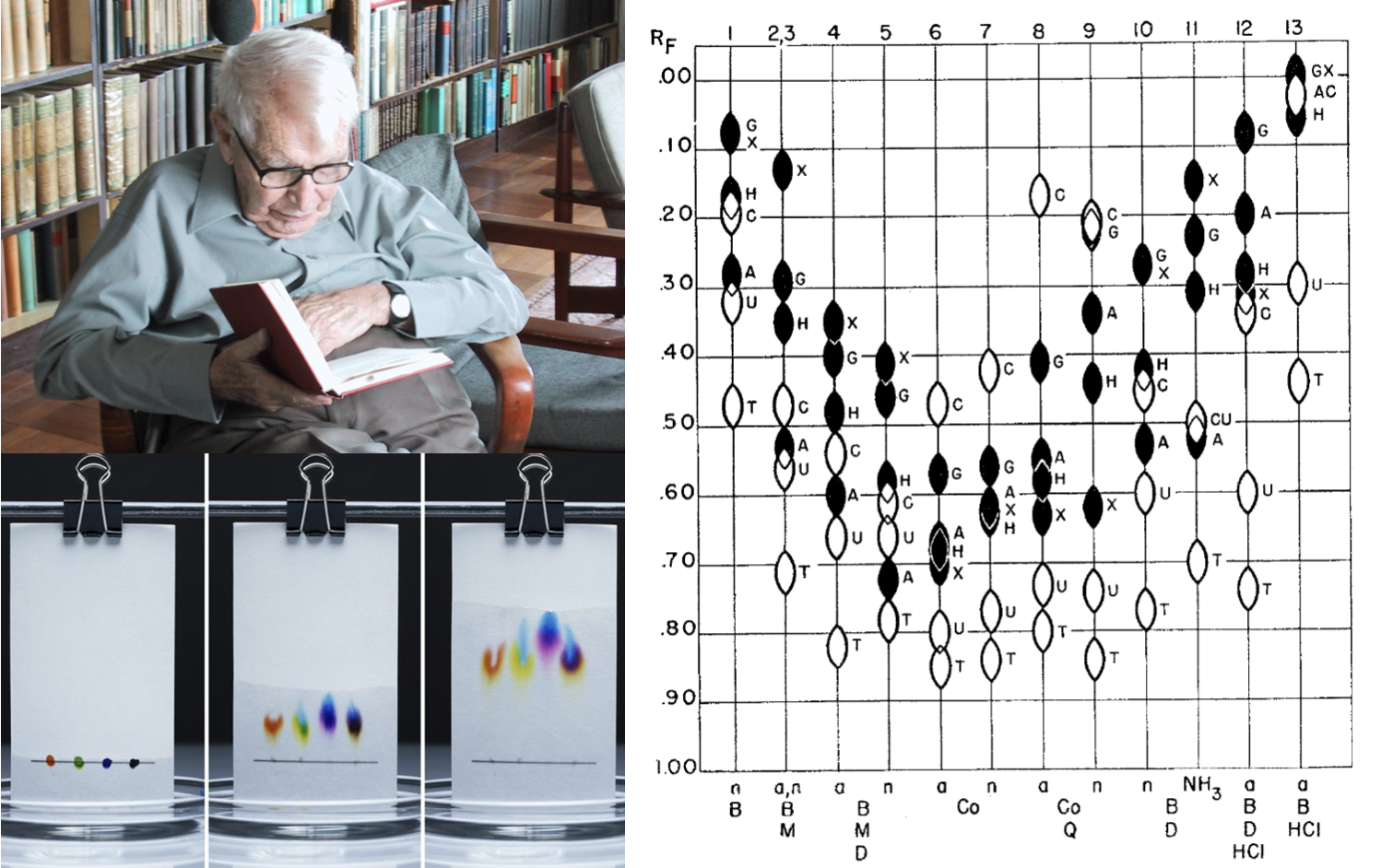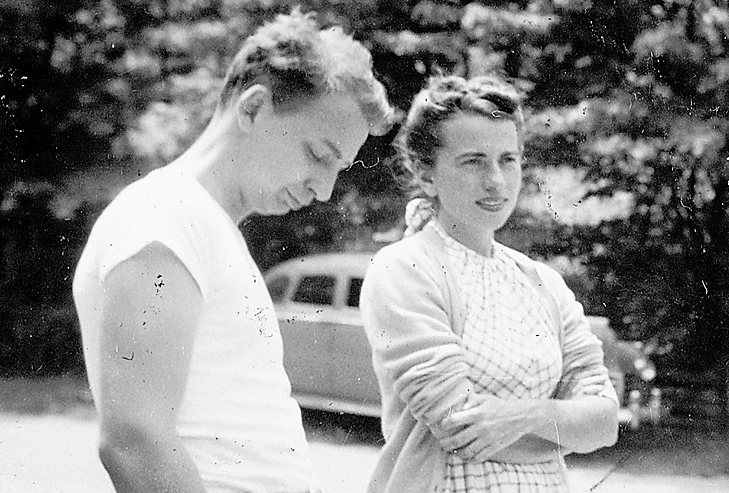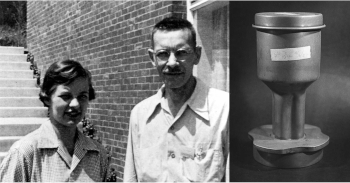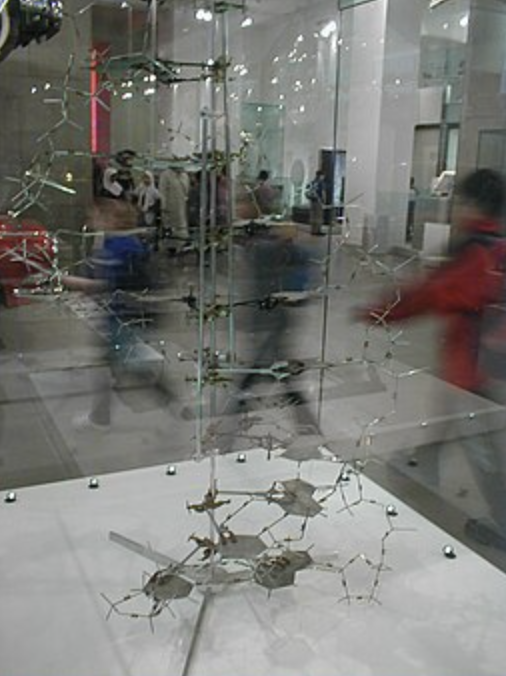Insights from the Collections
The Consortium's collections provide many opportunities to learn more about the history of genetic science.
Our cross-institutional search tool allows researchers to investigate materials across multiple institutions from a single interface. With millions of catalog records of rare books and manuscripts and thousands of finding aids, the Consortium's search hub offers scholars and the public the ability to identify and locate relevant materials.
Selected Bibliography
Introduction
Though by no means a comprehensive list, here are some suggestions:
Hayes, W. 1960. “DNA and Biological Research.” Proceedings of the Royal Society of Medicine 53 (8): 620–25. https://doi.org/10.1177/003591576005300808.
Pollock, M. R. 1970. “The Discovery of DNA: An Ironic Tale of Chance, Prejudice and Insight.” Journal of General Microbiology 63: 1–20.
Portugal, Franklin H., and Jack S. Cohen. A Century of DNA: A History of the Discovery of the Structure and Function of the Genetic Substance. Cambridge, Mass: MIT Press, 1977.
Judson, H. F. The Eighth Day of Creation: Makers of the Revolution in Biology. Simon and Schuster, 1979.
Olby, Robert Cecil. The Path to the Double Helix: The Discovery of DNA. Courier Dover Publications, 1994.
Lagerkvist, Ulf. DNA Pioneers and Their Legacy. Yale University Press New Haven, CT, 1998.
Nelkin, Dorothy, and M. Susan Lindee. The DNA Mystique: The Gene as a Cultural Icon [With a New Preface and Conclusion]. University of Michigan Press, 2004.
Altman, Sidney. “Masters of DNA.” Journal of Biological Chemistry 280, no. 15 (April 15, 2005): 14361–65. https://doi.org/10.1074/jbc.X400012200.
Williams, Gareth. Unravelling the Double Helix: The Lost Heroes of DNA. Hachette UK, 2019.
Morange, Michel. 2020. The Black Box of Biology: A History of the Molecular Revolution. Translated by Matthew Cobb. Harvard University Press. https://www.hup.harvard.edu/catalog.php?isbn=9780674281363.
Episode 1
Greenstein, Jesse P. 1943. “Friedrich Miescher, 1844-1895.” The Scientific Monthly 57 (6): 523–32.
Buess, Heinrich. 1953. “Joh. Friedrich Miescher and the Contribution of Basle Physicians to the Biology of the Nineteenth Century.” The Yale Journal of Biology and Medicine 25 (4): 250–61.
Mirsky, Alfred E. 1968. “The Discovery of DNA.” Scientific American 218 (6): 78–90.
Olby, Robert. 1969. “Cell Chemistry in Miescher’s Day.” Medical History 13 (4): 377–82.
James, J. 1970. “Miescher’s Discoveries of 1869: A Centenary of Nuclear Chemistry.” Journal of Histochemistry & Cytochemistry 18 (3): 217–19. https://doi.org/10.1177/18.3.217.
Dahm, Ralf. 2005. “Friedrich Miescher and the Discovery of DNA.” Developmental Biology 278 (2): 274–88.
Dahm, Ralf. 2008. “Discovering DNA: Friedrich Miescher and the Early Years of Nucleic Acid Research.” Human Genetics 122 (6): 565–81.
Dahm, Ralf. 2008. “The First Discovery of DNA.” American Scientist 96 (4): 320–27.
Dahm, Ralf. 2010. “A Link in the Chain: Friedrich Miescher (1844-1895).” Karger Gazette, 3
Dahm, Ralf. 2010. “From Discovering to Understanding: Friedrich Miescher’s Attempts to Uncover the Function of DNA.” EMBO Reports 11 (3): 153–60. https://doi.org/10.1038/embor.2010.14.
Dahm, Ralf. 2021. “Isolating the Instructions for Life.” American Scientist 109: 134–35.
Dahm, Ralf, and Mita Banerjee. 2019. “How We Forgot Who Discovered DNA: Why It Matters How You Communicate Your Results.” BioEssays 41 (4): 1900029.
Lamm, Ehud, Oren Harman, and Sophie Juliane Veigl. 2020. “Before Watson and Crick in 1953 Came Friedrich Miescher in 1869.” Genetics 215 (2): 291–96. https://doi.org/10.1534/genetics.120.303195.
Veigl, Sophie Juliane, Oren Harman, and Ehud Lamm. 2020. “Friedrich Miescher’s Discovery in the Historiography of Genetics: From Contamination to Confusion, from Nuclein to DNA.” Journal of the History of Biology 53 (3): 451–84. https://doi.org/10.1007/s10739-020-09608-3.
Hall, Kersten, and Neeraja Sankaran. 2021. “DNA Translated: Friedrich Miescher’s Discovery of Nuclein in Its Original Context.” The British Journal for the History of Science 54 (1): 99–107. https://doi.org/10.1017/S000708742000062X.
Episode 2
Kossel, Albrecht. “The Chemical Composition of the Cell.” The Harvey Lectures 7 (1912): 33–51.
Kossel, Albrecht. “Nobel Lecture: The Chemical Composition of the Cell Nucleus.” NobelPrize.org, December 12, 1910. https://www.nobelprize.org/prizes/medicine/1910/kossel/lecture/.
Abir-Am, Pnina. Review of A Century of DNA: A History of the Discovery of the Structure and Function of the Genetic Substance, by Franklin H. Portugal and Jack S. Cohen. Isis 69, no. 3 (1978): 449–50.
Rheinberger, Hans-Jörg. “A Short History of Molecular Biology.” History and Philosophy of Science and Technology 2 (2010): 1–31.
Framm, Edith, and Joachim Framm. Albrecht Kossel und die DNA: Ein Nobelpreisträger aus Mecklenburg [Albrecht Kossel and DNA: A Nobel Laureate from Mecklenburg]. Wismar, 2019.
Lorch, Mark. Biochemistry: A Very Short Introduction. Very Short Introductions. Oxford, New York: Oxford University Press, 2021.
Framm, Edith, and Joachim Framm. 2022. “Albrecht Kossel Und Die Nukleinbasen [Abrecht Kossel and the nucleobases],” Chemie in Unserer Zeit 56 (6): 372–77.
Episode 3
Mendel, Gregor. 1865. “Experiments in Plant Hybridization.” Presented at the Brünn Natural History Society, Brünn. http://old.esp.org/foundations/genetics/classical/gm-65-a.pdf.
Boveri, Theodor. 1904. Ergebnisse Über Die Konstitution Der Chromatischen Substanz Des Zelkerns [Results on the constitution of the chromatin substance of the cell’s nucleus] Jena: Fisher.
Smocovitis, V. B. 1992. “Unifying Biology: The Evolutionary Synthesis and Evolutionary Biology.” Journal of the History of Biology 25 (1): 1–65. https://doi.org/10.1007/BF01947504.
Smocovitis, Vassiliki Betty. 1997. “G. Ledyard Stebbins, Jr. and the Evolutionary Synthesis (1924-1950).” American Journal of Botany 84 (12): 1625–37. https://doi.org/10.2307/2446460.
Martins, L.A.-C.P. 1999. “Did Sutton and Boveri Propose the So-Called Sutton-Boveri Chromosome Hypothesis?” Genetics and Molecular Biology 22 (2): 261–72. https://doi.org/10.1590/S1415-47571999000200022.
Crow E. W. and J. F. Crow 2002 "Perspectives 100 years ago: Walter Sutton and the chromosome theory of heredity." Genetics 160: 1-4.
Tagarelli, Antonio, Anna Piro, Paolo Lagonia, and Giuseppe Tagarelli. 2003. “Walter Stanborough Sutton: A Hundred Years after the Chromosomal Theory of Heredity.” Chromosoma 112: 1–5.
Hegreness, Matthew, and Matthew Meselson. 2007. “What Did Sutton See?: Thirty Years of Confusion Over the Chromosomal Basis of Mendelism.” Genetics 176 (4): 1939–44. https://doi.org/10.1534/genetics.104.79723.
Satzinger, Helga. 2008. “Theodor and Marcella Boveri: Chromosomes and Cytoplasm in Heredity and Development.” Nature Reviews Genetics 9 (3): 231–38. https://doi.org/10.1038/nrg2311.
Mahadevan, S. 2009. “Walter Sutton and the Chromosome Theory of Heredity.” Resonance, 312–15.
Deichmann, Ute. 2015. “Chromatin: Its History, Current Research, and the Seminal Researchers and Their Philosophy.” Perspectives in Biology and Medicine 58 (2): 143–64. https://doi.org/10.1353/pbm.2015.0024.
Kasbekar, D. P. 2016. “History and Development of Genetics Research in India: Three Case Studies.” Indian Journal of History of Science 51 (2.2). https://doi.org/10.16943/ijhs/2016/v51i2.2/48456.
Episode 4
Griffith, Fred. 1921. “Serological Types of Pneumococci in Lobar Pneumonia: A Study of 100 Cases.” The Lancet 198 (5109): 226–28.
Griffith, Fred. 1923. “The Influence of Immune Serum on the Biological Properties of Pneumococci.” Reports of the Local Government Board on Public Health and Medical Subjects, no. 18: 1–13.
Griffith, Fred. 1926. “Types of Haemolytic Streptococci in Relation to Scarlet Fever.” Epidemiology and Infection 25 (4): 385–97. https://doi.org/10.1017/S0022172400017502.
Arkwright, J. A. 1929. “Bradshaw Lecture on the Virulence of the Microorganism in Infective Disease.” The Lancet, Originally published as Volume 2, Issue 5541, 214 (5541): 963–68. https://doi.org/10.1016/S0140-6736(01)09687-8.
Arkwright, J. A. 1930. “Variation.” In A System of Bacteriology in Relation to Medicine, 1:311–74. London: His Majesty’s Stationery Office.
Lederberg, J. 1949. “Bacterial Variation.” Annual Reviews in Microbiology 3 (1): 1–22.
Lederberg, Joshua. 1956. “Genetic Transduction.” American Scientist 44 (3): 264–80.
Hayes, W. 1966a. “Genetic Transformation: A Retrospective Appreciation First Griffith Memorial Lecture.” Microbiology 45 (3): 385–97.
Hayes, W. 1966b. “The Discovery of Pneumococcal Type Transformation: An Appreciation.” The Journal of Hygiene 64 (2): 177–84.
Downie, A. W. 1972. “Pneumococcal Transformation-A Backward View Fourth Griffith Memorial Lecture.” Microbiology 73 (1): 1–11.
Baxby, Derrick. 1989. “The Significance of Pneumococcal Type Transformation in the History of Molecular Biology and Genetics.” Journal of Biological Education 23 (3): 213–17.
Ackert, Lloyd. 2003. “Microbial Musings: A History of Microbiology (Review), by Debra Jan Bibel.” Bulletin of the History of Medicine 77 (2): 466–67. https://doi.org/10.1353/bhm.2003.0048.
Ackert, Lloyd. 2007. “René Dubos, Friend of the Good Earth: Microbiologist, Medical Scientist, Environmentalist (Review).” Bulletin of the History of Medicine 81 (3): 676–77. https://doi.org/10.1353/bhm.2007.0060.
Moxon, E. Richard. 2009. “Bacterial Variation, Virulence and Vaccines.” Microbiology 155 (4): 997–1003. https://doi.org/10.1099/mic.0.024877-0.
Ackert, Lloyd. 2012. Sergei Vinogradskii and the Cycle of Life: From the Thermodynamics of Life to Ecological Microbiology, 1850-1950. Springer.
Eichmann, Klaus, and Richard M. Krause. 2013. “Fred Neufeld and Pneumococcal Serotypes: Foundations for the Discovery of the Transforming Principle.” Cellular and Molecular Life Sciences 70 (13): 2225–36. https://doi.org/10.1007/s00018-013-1351-z.
Méthot, Pierre-Olivier. “Bacterial Transformation and the Origins of Epidemics in the Interwar Period: The Epidemiological Significance of Fred Griffith’s ‘Transforming Experiment.’” Journal of the History of Biology 49, no. 2 (2016): 311–58.
Morange, Michel. “The Historiography of Molecular Biology.” In Handbook of the Historiography of Biology, edited by Michael Dietrich, Mark Borrello, and Oren Harman, 1–20. Historiographies of Science. Cham: Springer International Publishing, 2018. https://doi.org/10.1007/978-3-319-74456-8_11-1.
Episode 5
Levene, P. A. 1909. “Über Die Hefenucleinsaure.” Biochem. Zschr. 17: 120–31.
Levene, P. A. 1910. “On the Biochemistry of Nucleic Acids.” Journal of the American Chemical Society 32 (2): 231–40. https://doi.org/10.1021/ja01920a010.
Levene, P.A., and W.A. Jacobs. 1912. “On the Structure of Thymus Nucleic Acid.” Journal of Biological Chemistry 12 (3): 411–20. https://doi.org/10.1016/S0021-9258(18)88677-X.
Levene, P. A. 1919. “The Structure of Yeast Nucleic Acid IV: Ammonia Hydrolysis.” Journal of Biological Chemistry 40: 415–24.
Levene, P. A., L. A. Mikeska, and T. Mori. 1930. “On the Carbohydrate of Thymonucleic Acid.” Journal of Biological Chemistry 85 (3): 785–87. https://doi.org/10.1016/S0021-9258(18)76947-0.
Levene, Phoebus Aaron, and Lawrence Wade Bass. 1931. Nucleic Acids. Chemical Catalog Company New York.
Bass, Lawrence W. 1940. “Phoebus Aaron Theodor Levene 1869-1940.” Science 92 (2392): 392–95. https://doi.org/10.1126/science.92.2392.392.
Van Slyke, Donald Dexter, and Walter Abraham Jacobs. 1944. “Biographical Memoir of Phoebus Aaron Theodor Levene, 1869-1940.” Biographical Memoirs of the National Academy of Sciences 23: 75–126.
Olby, RC. 1979. “The Significance of the Macromolecules in the Historiography of Molecular Biology.” History and Philosophy of the Life Sciences 1 (2): 185–96.
Hunter, Graeme K. 1999. “Phoebus Levene and the Tetranucleotide Structure of Nucleic Acids.” Ambix 46 (2): 73–103. https://doi.org/10.1179/amb.1999.46.2.73.
Simoni, Robert D., Robert L. Hill, and Martha Vaughan. 2002. “The Structure of Nucleic Acids and Many Other Natural Products: Phoebus Aaron Levene.” Journal of Biological Chemistry 277 (22): e11–12. https://doi.org/10.1016/S0021-9258(20)85086-8.
Bernal, Pedro J. 2006. “From ‘Greasy Chemistry’ to ‘Macromolecule’: Thoughts on the Historical Development of the Concept of a Macromolecule.” Journal of Chemical Education 83 (6): 870. https://doi.org/10.1021/ed083p870.
Hargittai, István. 2009. “The Tetranucleotide Hypothesis: A Centennial.” Structural Chemistry 20 (5): 753–56. https://doi.org/10.1007/s11224-009-9497-x.
Frixione, Eugenio, and Lourdes Ruiz-Zamarripa. 2019. “The ‘Scientific Catastrophe’ in Nucleic Acids Research That Boosted Molecular Biology.” Journal of Biological Chemistry 294 (7): 2249–55. https://doi.org/10.1074/jbc.CL119.007397.
Episode 6
Astbury, William T., and Florence O. Bell. “Some Recent Developments in the X-Ray Study of Proteins and Related Structures.” In Cold Spring Harbor Symposia on Quantitative Biology, 6:109–21. Cold Spring Harbor Laboratory Press, 1938.
Bell, Florence Ogilvy. “X-Ray and Related Studies of the Structure of the Proteins and Nucleic Acids.” PhD Thesis, University of Leeds, 1939.
Astbury, William T. “Protein and Virus Studies in Relation to the Problem of the Gene.” In Proceedings of the 7th International Congress on Genetics. Edinburgh, 49–51, 1939.
Astbury, W.T. “Adventures in Molecular Biology.” The Harvey Lectures 46 (1950): 3–44.
Witkowski, Jan. “Fifty Years on: Molecular Biology’s Hall of Fame.” Trends in Biotechnology 6, no. 10 (1988): 234–43.
Davies, Mansel. “W.T. Astbury, Rosie Franklin, and DNA: A Memoir.” Annals of Science 47, no. 6 (1990): 607–18.
Ghosh, Anirban, and Manju Bansal. “A Glossary of DNA Structures from A to Z.” Acta Crystallographica Section D Biological Crystallography 59, no. 4 (April 1, 2003): 620–26. https://doi.org/10.1107/S0907444903003251.
Meselson, Matthew. “Explorations in the Land of DNA and Beyond.” Nature Medicine 10, no. 10 (October 2004): 1034–37. https://doi.org/10.1038/nm1004-1034.
Witkowski, Jan A. 2007. “J. D. Bernal: The Sage of Science.” The FASEB Journal 21 (2): 302–4. https://doi.org/10.1096/fj.07-0202ufm.
McGregor, Hugh C. J., and Richard B. Gunderman. “X-Ray Crystallography and the Elucidation of the Structure of DNA.” American Journal of Roentgenology 196, no. 6 (June 2011): W689–92. https://doi.org/10.2214/AJR.10.5479.
Hall, Kersten. “William Astbury and the Biological Significance of Nucleic Acids, 1938–1951.” Studies in History and Philosophy of Biological and Biomedical Sciences 42 (June 2011): 119–28. https://doi.org/10.1016/j.shpsc.2010.11.018.
Thomas, John Meurig. “The Birth of X-Ray Crystallography.” Nature 491, no. 7423 (November 2012): 186–87. https://doi.org/10.1038/491186a.
Hall, Kersten T. The Man in the Monkeynut Coat: William Astbury and the Forgotten Road to the Double-Helix. Oxford: Oxford University Press, 2014.
Witkowksi, J. A. “Winding Road to DNA.” Nature 568 (2019): 308.
Hall, Kersten. “Florence Bell—the ‘Housewife’ with X-Ray Vision.” Notes and Records: The Royal Society Journal of the History of Science, February 24, 2021, https://doi.org/10.1098/rsnr.2020.0064.
Episode 7
Hotchkiss, R. D. 1953. “The Genetic Chemistry of the Pneumococcal Transformations.” Harvey Lectures 49: 124–44.
Mirsky, Alfred E. 1953. “The Chemistry of Heredity.” Scientific American 188 (2): 47–57.
Dubos, R. J. 1956. “Oswald Theodore Avery. 1877-1955.” Biographical Memoirs of Fellows of the Royal Society 2 (November): 35–48.
Hotchkiss, R. D. 1965. “Oswald T. Avery: 1877-1955.” Genetics 51 (1): 1–10.
Hotchkiss, Rollin D. 1966. “Gene, Transforming Principle, and DNA.” In Phage and the Origins of Molecular Biology, 180–200.
Coburn, Alvin F. 1969. “Oswald Theodore Avery and DNA.” Perspectives in Biology and Medicine 12 (4): 623–30. https://doi.org/10.1353/pbm.1969.0002.
Wyatt, Herbert V. 1972. “When Does Information Become Knowledge.” Nature 235 (5333): 86–89.
Lederberg, Joshua. 1972. “Reply to H. V. Wyatt.” Nature 239: 234.
Olby, Robert. 1972. “Avery in Retrospect.” Nature 239 (5370): 295–96.
Pirie, N. W. 1972. “Avery in Retrospect.” Nature 240 (5383): 572.
McCarty, Maclyn. 1980. “Reminiscences of the Early Days of Transformation.” Annual Review of Genetics 14 (1): 1–15.
Diamond Jr, Arthur M. 1982. “Avery’s" Neurotic Reluctance".” Perspectives in Biology and Medicine 26 (1): 137–50.
Bendiner, Elmer. 1982. “Avery: Making Sense of A ‘Stupid Tetranucleotide.’” Hospital Practice 17 (10): 195–219. https://doi.org/10.1080/21548331.1982.11702401.
Thomas, Lewis. 1984. “Oswald Avery and the Cascade of Surprises.” Technology in Society 6 (1): 37–40.
Vigue, Charles L. 1984. “Oswald Avery and DNA.” The American Biology Teacher 46 (4): 207–11. https://doi.org/10.2307/4447817.
McCarty, Maclyn. “On the Unexpected Fruits of Mission-Oriented Research.” Proceedings of the American Philosophical Society 128, no. 1 (1984): 20–26.
Russell, N. 1988. “Oswald Avery and the Origin of Molecular Biology.” British Journal for the History of Science 21 (71 Pt 4): 393–400.
Amsterdamska, Olga. 1993. “From Pneumonia to DNA: The Research Career of Oswald T. Avery.” Historical Studies in the Physical and Biological Sciences 24 (1): 1–40.
Lederberg, Joshua. 1994. “The Transformation of Genetics by DNA: An Anniversary Celebration of Avery, MacLeod and McCarty (1944).” Genetics 136 (2): 423–26.
McCarty, Maclyn. 1994. “A Retrospective Look: How We Identified the Pneumococcal Transforming Substance as DNA.” Journal of Experimental Medicine 179: 385–94.
Bearn, Alexander G. 1996. “Oswald T. Avery and the Copley Medal of the Royal Society.” Perspectives in Biology and Medicine 39 (4): 550–54.
Austrian, Robert. 1999. “Oswald T. Avery: The Wizard of York Avenue.” The American Journal of Medicine 107 (1): 7–11.
Reichard, Peter. 2002. “Osvald T. Avery and the Nobel Prize in Medicine.” Journal of Biological Chemistry 277 (16): 13355–62. https://doi.org/10.1074/jbc.R200002200
Deichmann, U. 2004. “Early Responses to Avery et al.’s Paper on DNA as Hereditary Material.” Historical Studies in the Physical and Biological Sciences 34 (2): 207–32.
Ghose, Tarunendu. 2004. “Oswald Avery: The Professor, DNA, and the Nobel Prize That Eluded Him.” Canadian Bulletin of Medical History 21 (1): 135–44.
Cresto, Eleonora. 2008. “In Search of the Best Explanation about the Nature of the Gene: Avery on Pneumococcal Transformation.” Studies in History and Philosophy of Biological and Biomedical Sciences 39 (1): 65–79. https://doi.org/10.1016/j.shpsc.2007.12.012.
Deichmann, Ute. 2009. “Challenging the Protein Dogma of the Gene: Oswald T. Avery, a Revolutionary Conservative.” In Rebels, Mavericks, and Heretics in Biology, edited by Oren Harman and Michael Dietrich, 154–73. New Haven, Conn.; London: Yale University Press.
Portugal, Frank. 2010. “Oswald T. Avery: Nobel Laureate or Noble Luminary?” Perspectives in Biology and Medicine 53 (4): 558–70. https://doi.org/10.1353/pbm.2010.0014.
Cobb, Matthew. 2014. “Oswald Avery, DNA, and the Transformation of Biology.” Current Biology 24 (2): R55–60.
Cobb, Matthew. 2016. “A Speculative History of DNA: What If Oswald Avery Had Died in 1934?” PLoS Biology 14 (12): e2001197.
Montgomery, Geoffrey. 2019. “Discovering that genes are made of DNA.” https://www.rockefeller.edu/events-and-lectures/40062-discovering-genes-dna/.
Episode 8
Dubos, René, and Oswald T. Avery. “Decomposition of the Capsular Polysaccharide of Pneumococcus Type II by a Bacterial Enzyme.” Journal of Experimental Medicine 54, no. 1 (July 1, 1931): 51–71. https://doi.org/10.1084/jem.54.1.51.
McCarty, Maclyn. 1945. “Reversible Inactivation of the Substance Inducing Transformation of Pneumococcal Types.” The Journal of Experimental Medicine 81 (5): 501–14. https://doi.org/10.1084/jem.81.5.501.
McCarty, Maclyn. 1946. “Chemical Nature and Biological Specificity of the Substance Inducing Transformation of Pneumococcal Types.” Bacteriological Reviews 10 (1–2): 63–71.
Allfrey, V., and A. E. Mirsky. 1952. “Some Aspects of the Desoxyribonuclease Activities of Animal Tissues.” The Journal of General Physiology 36 (2): 227–41.
Hotchkiss, Rollin D. “(R)Evolution.” Concluding remarks presented at the Symposium on Genetic Recombination, Oak Ridge National Laboratory, April 21, 1954.
McCarty, Maclyn. 1985. The Transforming Principle: Discovering That Genes Are Made of DNA. New York & London: W. W. Norton & Company.
Brenner, Sydney. 1985. “The Rough and the Smooth.” Nature 317: 209–10.
Luria, Salvador E. 1986. Review of A Personal Account of the Epochal Discovery That Identified DNA as the Genetic Material, by Maclyn McCarty. Scientific American 254 (4): 24–32.
Strauss, Bernard S. “The Transforming Principle by Maclyn McCarty.” Perspectives in Biology and Medicine 29, no. 3 (1986): 478–81. https://doi.org/10.1353/pbm.1986.0025.
Fantini, Bernardino. 1988. Review of Genes and DNA, by M. McCarty. History and Philosophy of the Life Sciences 10 (1): 145–51.
Montgomery, Geoff. May 13, 1996. Interview with Maclyn McCarty, Rockefeller University, New York.
Witkowski, Jan A. 1999. “Once upon a Time.” Trends in Biochemical Sciences 24: 462.
McCarty, M. 2003. “Discovering Genes Are Made of DNA.” Nature 421 (6921): 406.
Gotschlich, Emil C., and Vincent A. Fischetti. 2005. “The Career of Maclyn McCarty.” Journal of Experimental Medicine 201 (11): 1699–1707.
Lederberg, Joshua, and Emil C. Gotschlich. 2005. “A Path to Discovery: The Career of Maclyn McCarty.” PLOS Biology 3 (10): e341. https://doi.org/10.1371/journal.pbio.0030341.
Prusiner, Stanley B., and Maclyn McCarty. 2006. “Discovering DNA Encodes Heredity and Prions Are Infectious Proteins.” Annual Review of Genetics 40: 25–45.\Witkowksi, J. A. 2019. “Winding Road to DNA.” Nature 568: 308.
Witkowksi, J. A. 2019. “Winding Road to DNA.” Nature 568: 308.
Episode 9
Chargaff, Erwin, and Ernst Vischer. “Nucleoproteins, Nucleic Acids, and Related Substances.” Annual Review of Biochemistry 17, no. 1 (1948): 201–26.
Hotchkiss, Rollin D. “The Quantitative Separation of Purines, Pyrimidines, and Nucleosides by Paper Chromatography.” Journal of Biological Chemistry 175, no. 1 (1948): 315–32.
Vischer, Ernst, and Erwin Chargaff. “The Composition of the Pentose Nucleic Acids of Yeast and Pancreas.” Journal of Biological Chemistry 176, no. 2 (1948): 715–34.
Chargaff, Erwin. “Chemical Specificity of Nucleic Acids and Mechanism of Their Enzymatic Degradation.” Experientia 6, no. 6 (June 15, 1950): 201–9.
Zamenhof, Stephen, and Erwin Chargaff. “Dissymmetry in Nucleotide Sequence of Desoxypentose Nucleic Acids.” Journal of Biological Chemistry 187, no. 1 (1950): 1–14.
Zamenhof, Stephen, George Brawerman, and Erwin Chargaff. “On the Desoxypentose Nucleic Acids from Several Microorganisms.” Biochimica et Biophysica Acta 9 (1952): 402–5.
Chargaff, Erwin. “Preface to a Grammar of Biology.” Science 172, no. 3984 (1971): 637–42.
Chargaff, Erwin. “A Few Remarks on the Impact of Biochemistry on Genetics.” Stadler Symposium 7 (1975): 9–14.
Donohue. “Fragments of Chargaff.” Nature 276 (1978): 133–35.
Chargaff, Erwin. “How Genetics Got a Chemical Education.” Annals of the New York Academy of Sciences 325 (1979): 345–60.
Abir-Am, Pnina. “From Biochemistry to Molecular Biology: DNA and the Acculturated Journey of the Critic of Science Erwin Chargaff.” History and Philosophy of the Life Sciences 2, no. 1 (1980): 3–60.
Judson, Horace Freeland. “Frederick Sanger, Erwin Chargaff, and the Metamorphosis of Specificity.” Gene 135, no. 1–2 (December 1993): 19–23. https://doi.org/10.1016/0378-1119(93)90043-3.
Hotchkiss, Rollin D. “DNA in the Decade before the Double Helix.” Annals of the New York Academy of Sciences 758, no. 1 (1995): 55–73. https://doi.org/10.1111/j.1749-6632.1995.tb24809.x.
Forsdyke, Donald R., and James R. Mortimer. “Chargaff’s Legacy.” Gene 261, no. 1 (December 30, 2000): 127–37. https://doi.org/10.1016/S0378-1119(00)00472-8.
Cohen, Seymour S. “Erwin Chargaff, 11 August 1905 · 20 June 2002: Science in a Chaotic Time.” Proceedings of the American Philosophical Society 148, no. 2 (2004): 222–28.
Kresge, N., R. D Simoni, and R. L Hill. “Chargaff’s Rules: The Work of Erwin Chargaff.” Journal of Biological Chemistry 280, no. 24 (2005): e21.
Manchester, Keith L. “Historical Opinion: Erwin Chargaff and His ‘Rules’ for the Base Composition of DNA: Why Did He Fail to See the Possibility of Complementarity?” Trends in Biochemical Sciences 33, no. 2 (February 1, 2008): 65–70. https://doi.org/10.1016/j.tibs.2007.10.009.
Volkov, R. A., and S. S. Rudenko. “War and World of Erwin Chargaff (Dedicated to 110th Anniversary of Birth).” Cytology and Genetics 50, no. 1 (January 1, 2016): 72–78. https://doi.org/10.3103/S0095452716010102.
Hall, Kersten. “‘In Praise of Wool’: The Development of Partition Chromatography and Its under-Appreciated Impact on Molecular Biology.” Endeavour 43, no. 4 (December 2019): 100708 (16 pages). https://doi.org/10.1016/j.endeavour.2020.100708.
Hargittai, Istvan. “Paradigms and Paradoxes: Complementarity in Chemical Structures—a Tribute to Erwin Chargaff.” Structural Chemistry 33, no. 4 (August 1, 2022): 1003–5. https://doi.org/10.1007/s11224-022-01915-1.
Episode 10
Austrian, Robert, and Colin M. MacLeod. “Acquisition of M Protein by Pneumococci through Transformation Reactions.” The Journal of Experimental Medicine 89, no. 4 (1948): 451–60.
Taylor, Harriett E. “Additive Effects of Certain Transforming Agents from Some Variants of Pneumococcus.” Journal of Experimental Medicine, n.d., 399–424.
Ephrussi-Taylor, Harriet. “Mutating Concepts of the Gene.” Journal of Heredity 43, no. 1 (January 1, 1952): 36. https://doi.org/10.1093/oxfordjournals.jhered.a106255.
Austrian, Robert. “Bacterial Transformation Reactions.” Bacteriological Reviews 16, no. 1 (1952): 31–50.
Hotchkiss, R. D. “The Genetic Chemistry of the Pneumococcal Transformations.” Harvey Lectures 49 (1953-54): 124–44.
Ephrussi-Taylor, Harriett. “Current Status of Bacterial Transformations.” In Advances in Virus Research, 3:275–307. Elsevier, 1955.
Hotchkiss, Rollin D. “Bacterial Transformation.” Journal of Cellular and Comparative Physiology 45, no. S2 (1955): 1–22.
Hotchkiss, Rollin D., and Esther Weiss. “Transformed Bacteria.” Scientific American, 1956.
Austrian, Robert. Life with the Pneumococcus: Notes from the Bedside, Laboratory, and Library. University of Pennsylvania Press, 1985. https://www.jstor.org/stable/j.ctv4t80zj.
Hamilton, L. D., R. K. Barclay, M. H. F. Wilkins, G. L. Brown, H. R. Wilson, D. A. Marvin, H. Ephrussi-Taylor, and N. S. Simmons. “Similarity of the Structure of DNA from a Variety of Sources.” The Journal of Biophysical and Biochemical Cytology 5, no. 3 (May 1, 1959): 397–404. https://doi.org/10.1083/jcb.5.3.397.
Hotchkiss, Rollin D. “The Identification of Nucleic Acids as Genetic Determinants.” Annals of the New York Academy of Sciences 325, no. 1 (1979): 321–44.
Hotchkiss, Rollin D. “DNA in the Decade before the Double Helix.” Annals of the New York Academy of Sciences 758, no. 1 (1995): 55–73. https://doi.org/10.1111/j.1749-6632.1995.tb24809.x.
Hotchkiss, Rollin D. “Gene, Transforming Principle, and DNA.” In Phage and the Origins of Molecular Biology, 180–200, 1966.
Dawes, Heather. “The Quiet Revolution.” Current Biology 14, no. 15 (2004): R605–7.
Witkin, Evelyn M. “Remembering Rollin Hotchkiss (1911–2004).” Genetics 170, no. 4 (2005): 1443–47.
Cresto, Eleonora. “How DNA Became an Important Molecule Controversies at the Origins of Molecular Biology.” In Controversy Spaces: A Model of Scientific and Philosophical Change, 10:135–62, 2011. https://books.google.com/books?hl=en&lr=&id=6a9xAAAAQBAJ&oi=fnd&pg=PA135&ots=BoyPxQL0eu&sig=vzzJaIrtctlqTTLmnT_UUdBjNjU.
Episode 11
Maaløe, Ole, and James D. Watson. “The Transfer of Radioactive Phosphorus from Parental to Progeny Phage.” Proceedings of the National Academy of Sciences 37, no. 8 (1951): 507–13.
Hershey, A. D. “Intracellular Phages in the Reproductive Cycle of Bacteriophage T2.” Annales de l’Institut Pasteur 84, no. 1 (1953): 99–111.
Hershey, A. D. “Idiosyncrasies of DNA Structure.” Nobel Lecture presented at the Nobel Prize Award Ceremony, Stockholm, Sweden, December 12, 1969. https://www.science.org/doi/10.1126/science.168.3938.1425.
Witkowski, Jan, ed. “The Hershey-Chase Experiment.” In Illuminating Life: Selected Papers from Cold Spring Harbor Laboratory, 1903-1969, 201–3. Cold Spring Harbor, NY: Cold Spring Harbor Laboratory Press, 1999.
Stahl, Franklin W., and A. D. Hershey, eds. We Can Sleep Later: Alfred D. Hershey and the Origins of Molecular Biology. Cold Spring Harbor, N.Y: Old Spring Harbor Laboratory Press, 2000.
Hodgkin, Jonathan. “Hershey and His Heaven.” Nature Cell Biology 3, no. 3 (March 2001): E77–E77. https://doi.org/10.1038/35060155.
Creager, Angela NH. “Hershey Heaven.” Nature Structural Biology 8, no. 1 (2001): 18–19.
Dawson, Milly. “Martha Chase Dies.” Genome Biology 4, no. 1 (August 20, 2003): spotlight-20030820-01. https://doi.org/10.1186/gb-spotlight-20030820-01.
Creager, A. N. H. “Phosphorus-32 in the Phage Group: Radioisotopes as Historical Tracers of Molecular Biology.” Studies in History and Philosophy of Biological and Biomedical Sciences 40 (2009): 29–42.
Creager, Angela N. H. “A Chemical Reaction to the Historiography of Biology.” Ambix 64, no. 4 (October 2, 2017): 343–59. https://doi.org/10.1080/00026980.2017.1412136.
Creager, Angela NH. Life Atomic: A History of Radioisotopes in Science and Medicine. University of Chicago Press, 2019.
Hernandez, Victoria. “The Hershey-Chase Experiments (1952), by Alfred Hershey and Martha Chase.” In The Embryo Project Encyclopedia. Tempe, AZ: Arizona State University. School of Life Sciences. Center for Biology and Society., 2019. https://embryo.asu.edu/handle/10776/13109.
Episode 12
Klug, Aaron. “Rosalind Franklin and the Discovery of the Structure of DNA.” Nature 219, no. 5156 (1968): 808–10.
Hussain, F. “Did Rosalind Franklin Deserve DNA Nobel Prize?” New Scientist 68 (1975): 470.
Manwell, Clyde, and C. M. Ann Baker. “Commentary: The Double Helix: Science and Myth in the Act of Creation.”
BioScience 29, no. 12 (1979): 742–46.
https://doi.org/10.2307/1307669.
Johnson, Stephanie, and Thomas R. Mertens. “An Interview with Nobel Laureate Maurice Wilkins.”
The American Biology Teacher 51, no. 3 (March 1, 1989): 151–53.
https://doi.org/10.2307/4448881.
Maddox, Brenda. Rosalind Franklin: The Dark Lady of DNA. HarperCollins New York, 2002.
Wilkins, M. The Third Man of the Double Helix: The Autobiography of Maurice Wilkins. Oxford University Press, USA, 2003.
Elkin, Lynne Osman. “Rosalind Franklin and the Double Helix.” Physics Today 56, no. 3 (2003): 42–48.
Selya, Rena. “Essay Review: Defined by DNA: The Intertwined Lives of James Watson and Rosalind Franklin.” Journal of the History of Biology 36, no. 3 (2003): 591–97.
Williams, Nigel. “Maurice Wilkins (1916–2004).” Current Science 14, no. 21 (2004): R906.
Arnott, Struther, T.W.B. Kibble, and Tim Shallice. “Maurice Hugh Frederick Wilkins. 15 December 1916 — 5 October 2004: Elected FRS 1959.”
Biographical Memoirs of Fellows of the Royal Society 52 (January 2006): 455–78.
https://doi.org/10.1098/rsbm.2006.0031.
Gibbons, Michelle G. “Reassessing Discovery: Rosalind Franklin, Scientific Visualization, and the Structure of DNA.”
Philosophy of Science 79 (2012): 63.
https://doi.org/10.1086/663241.
Cuevas, Jose, and Laurence E. Heglar. “Photography and the Discovery of the Double Helix Structure of DNA.” Philosophy of Photography 4, no. 2 (December 1, 2013): 163–80. https://doi.org/10.1386/pop.4.2.163_1. Brooks-Bartlett, Jonathan C., and Elspeth F. Garman. “The Nobel Science: One Hundred Years of Crystallography.” Interdisciplinary Science Reviews 40, no. 3 (2015): 244–64.
Zwart, Hub. “The Third Man: Comparative Analysis of a Science Autobiography and a Cinema Classic as Windows into Post-War Life Sciences Research.”
History and Philosophy of the Life Sciences 37, no. 4 (July 24, 2015): 382–412.
https://doi.org/10.1007/s40656-015-0080-z.
Davis, Burtron H., and E. Thomas Strom. “Rosalind Franklin: Her Pathway to DNA.” In
The Posthumous Nobel Prize in Chemistry. Volume 2. Ladies in Waiting for the Nobel Prize, 1311:265–82. ACS Symposium Series 1311. American Chemical Society, 2018.
https://doi.org/10.1021/bk-2018-1311.ch011.
Danylova, T. V., and S. V. Komisarenko. “Standing on the Shoulders of Giants: James Watson, Francis Crick, Maurice Wilkins, Rosalind Franklin and the Birth of Molecular Biology.” Ukr Biochem J 92, no. 4 (2020): 154–65.
Hall, Kersten T. “Fifty Pence Story? (With Thanks to Simon Armitage).” Newsletter of the History of Science Society 49, no. 4 (2020): 1–3.
Episode 13
Watson, J. D., and O. Maaløe. “Nucleic Acid Transfer from Parental to Progeny Bacteriophage.”
Biochimica et Biophysica Acta 10 (1953): 432–42.
Crick, Francis H. C. “Letter to Son, Michael,” March 19, 1953.
https://wellcomecollection.org/works/v3ndr2ux.
Watson, James D.
The Double Helix: A Personal Account of the Discovery of the Structure of DNA. New York: Atheneum, 1968.
Lwoff, André. Truth, truth and what is truth (about how the structure of DNA was discovered)?; Review of
The Double Helix by James D. Watson.
Scientific American 219, no. 1 (1968): 133–38.
Crick, F. “The Double Helix: A Personal View.”
Nature 248, no. 5451 (1974): 766–69.
Lederberg, Joshua. “What the Double Helix (1953) Has Meant for Basic Biomedical Science: A Personal Commentary.”
JAMA 269, no. 15 (1993): 1981–85.
Crick, Francis. “Looking Backwards: A Birthday Card for the Double Helix.”
Gene 135, no. 1 (1993): 15–18.
Perutz, Max F. “Co-Chairman’s Remarks: Before the Double Helix.”
Gene 135, no. 1 (1993): 9–13.
Glickstein, Neil M. “‘The Double Helix’ Revisited.”
The American Biology Teacher 57, no. 3 (1995): 146–49.
https://doi.org/10.2307/4449951.
Watson, James. “The Double Helix 50 Years Later: Implications for Psychiatry.”
American Journal of Psychiatry 160, no. 4 (April 2003): 614–614.
https://doi.org/10.1176/appi.ajp.160.4.614.
De Chadarevian, Soraya. “Portrait of a Discovery: Watson, Crick, and the Double Helix.”
Isis 94, no. 1 (March 2003): 90–105.
https://doi.org/10.1086/376100.
Strasser, Bruno J. “Who Cares about the Double Helix?”
Nature 422, no. 6934 (2003): 803–4.
Chadarevian, Soraya de. “Relics, Replicas and Commemorations.”
Endeavour 27, no. 2 (June 1, 2003): 75–79.
https://doi.org/10.1016/S0160-9327(03)00060-7.
Bansal, Manju. “DNA Structure: Revisiting the Watson–Crick Double Helix.”
Current Science 85, no. 11 (2003): 1556–63.
Olby, Robert. “Quiet Debut for the Double Helix.”
Nature 421, no. 6921 (2003): 402–5.
Olby, Robert. “Why Celebrate the Golden Jubilee of the Double Helix?”
Endeavour 27, no. 2 (2003): 80–84.
Gann, Alexander, and Jan Witkowski. “The Lost Correspondence of Francis Crick.”
Nature 467, no. 7315 (September 2010): 519–24.
https://doi.org/10.1038/467519a.
Gingras, Yves. “Revisiting the ‘Quiet Debut’ of the Double Helix: A Bibliometric and Methodological Note on the ‘Impact’ of Scientific Publications.”
Journal of the History of Biology 43, no. 1 (February 2010): 159–81.
https://doi.org/10.1007/s10739-009-9183-2.
Watson, James D.
The Annotated and Illustrated Double Helix. Edited by Alexander Gann and Jan Witkowski. Annotated edition. Simon & Schuster, 2012.
Gann, Alexander, and A Witkowski. “DNA: Archives Reveal Nobel Nominations.”
Nature 496 (April 2013): 434.
Balaram, P. “The Double Helix: Sixty Years On.”
Current Science 104, no. 9 (2013): 1127–28.
Kantha, Sachi Sri. “Citation Patterns of the Four Seminal DNA Double-Helix Model Papers by Watson and Crick in 1953–54.”
Current Science 104, no. 9 (2013): 1237–39.
Cobb, Matthew, and Nathaniel Comfort. “What Watson and Crick Really Took from Franklin.”
Nature 616 (April 2023): 657–60.
Episode 14
Delbrück, M. “On the Replication of Desoxyribonucleic Acid (DNA).”
Proceedings of the National Academy of Sciences 40, no. 9 (September 1954): 783–88.
https://doi.org/10.1073/pnas.40.9.783.
Meselson, Matthew, Franklin W. Stahl, and Jerome Vinograd. “Equilibrium Dedimentation of Macromolecules in Density Gradients.” *Proceedings of the National Academy of Sciences* 43, no. 7 (July 15, 1957): 581 88.
https://doi.org/10.1073/pnas.43.7.581.
Holmes, Frederic Lawrence. Meselson, Stahl, and the Replication of DNA: A History of “The Most Beautiful Experiment in Biology.” 1 edition. New Haven, CT: Yale University Press, 2001.
Hanawalt, Philip C. “Density Matters: The Semiconservative Replication of DNA.” Proceedings of the National Academy of Sciences 101, no. 52 (2004): 17889–94.
Franklin, Allan. No Easy Answers: Science and the Pursuit of Knowledge. University of Pittsburgh Pre, 2007.
Szeberényi, József. “Problem Based Learning; The Meselson‐Stahl Experiment.”
Biochemistry and Molecular Biology Education 40, no. 3 (May 2012): 209–11.
https://doi.org/10.1002/bmb.20602.
Franklin, Allan. What Makes a Good Experiment? Reasons & Roles in Science. Pittsburgh, Pa: University of Pittsburgh Press, 2016.
Hernandez, Victoria. “Equilibrium Density Gradient Centrifugation in Cesium Chloride Solutions Developed by Matthew Meselson and Franklin Stahl.” In
Embryo Project Encyclopedia. 2017.
https://hdl.handle.net/10776/13032.
Hernandez, Victoria. “The Meselson-Stahl Experiment (1957– 1958), by Matthew Meselson and Franklin Stahl.” In The Embryo Project Encyclopedia. 2017.
Hernandez, Victoria. “The Debate over DNA Replication Before the Meselson-Stahl Experiment (1953–1957).” In
Embryo Project Encyclopedia. Tempe, 2018.
https://hdl.handle.net/10776/13040.
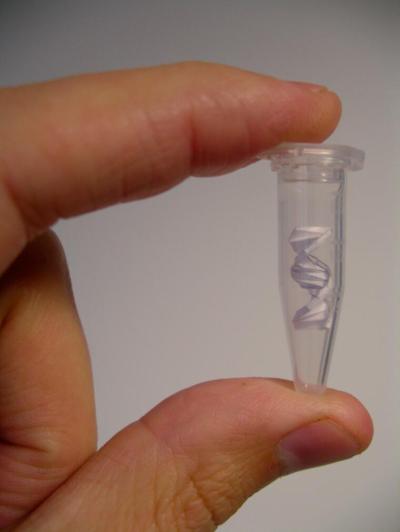

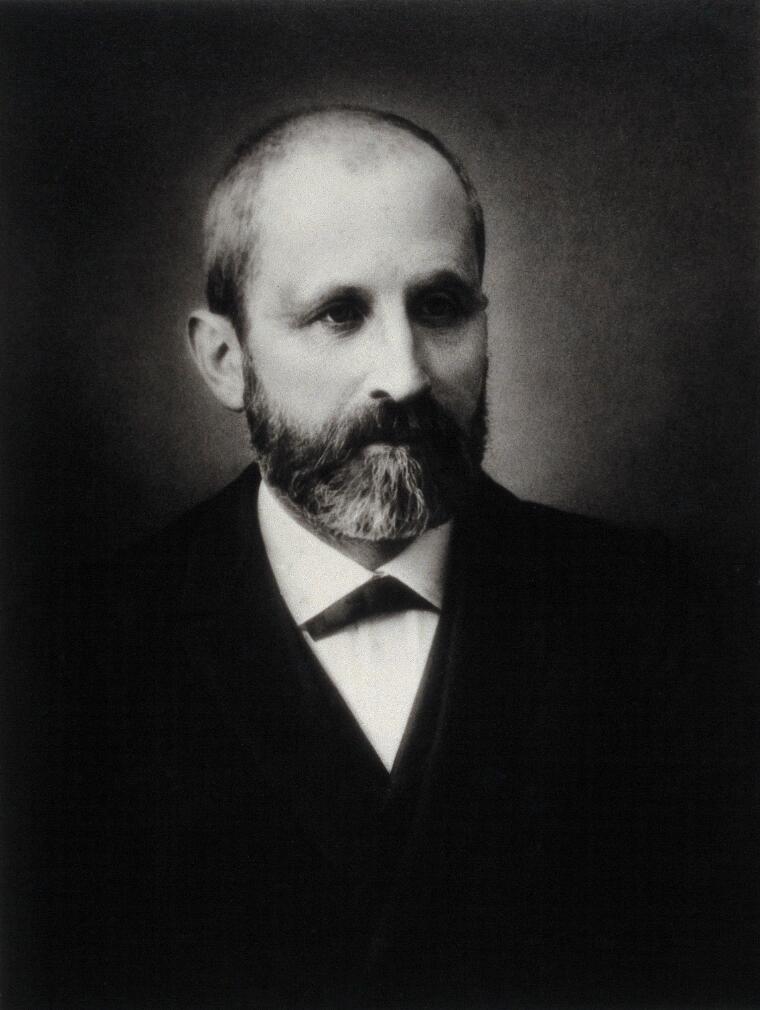


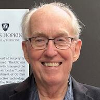

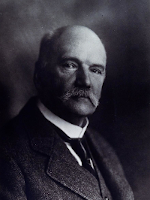
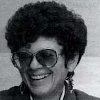


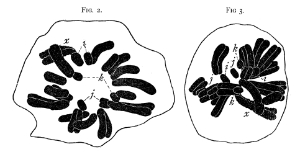 The papers discussed in episode 3 of the DNA Papers do not mention DNA in any way at all! And yet they are vitally important in any history of DNA because they provided the first step in bringing together a visible cellular component—the chromosome—both with ideas about heredity and about the chemical workings of living cells (DNA). The two papers, by Walter Sutton, “On the Morphology of the Chromosome Group in Brachystola Magna,” and “The chromosomes in heredity,” were published in 1902 and 1903 in the journal The Biological Bulletin, in 1902 (Vol. 4 (1): 24-39) and 1903 (Vol. 4 (5): 231-251), respectively.
The papers discussed in episode 3 of the DNA Papers do not mention DNA in any way at all! And yet they are vitally important in any history of DNA because they provided the first step in bringing together a visible cellular component—the chromosome—both with ideas about heredity and about the chemical workings of living cells (DNA). The two papers, by Walter Sutton, “On the Morphology of the Chromosome Group in Brachystola Magna,” and “The chromosomes in heredity,” were published in 1902 and 1903 in the journal The Biological Bulletin, in 1902 (Vol. 4 (1): 24-39) and 1903 (Vol. 4 (5): 231-251), respectively.





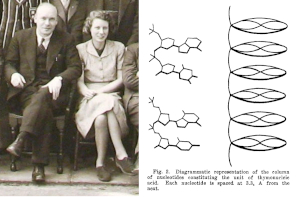 The sixth installment of this podcast series introduces a brand new player into the story of DNA: a technique from physics called X-ray crystallography. This technique would eventually play a key role in unlocking the secrets of DNA structure, but this 1938 paper by Leeds-based scientists William Astbury and Florence Bell marks the first instance of anyone attempting to use X-rays for the visualization of the nucleic acids. It is also the first paper in this series where the main contributor to the work was a woman.
The sixth installment of this podcast series introduces a brand new player into the story of DNA: a technique from physics called X-ray crystallography. This technique would eventually play a key role in unlocking the secrets of DNA structure, but this 1938 paper by Leeds-based scientists William Astbury and Florence Bell marks the first instance of anyone attempting to use X-rays for the visualization of the nucleic acids. It is also the first paper in this series where the main contributor to the work was a woman.
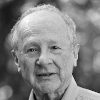

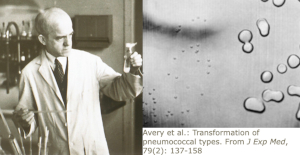 The seventh episode of the DNA Papers is the central one in this podcast series, not only because it marks the halfway point of the podcast, but also, more so, because the paper discussed is at the center of the history of all twentieth century biology. Written by a trio of microbiologists at the Rockefeller University in New York City, this paper without saying so in actual words, represents the first publication to offer evidence that DNA (though not yet known by that name) is the stuff that makes up genes:
The seventh episode of the DNA Papers is the central one in this podcast series, not only because it marks the halfway point of the podcast, but also, more so, because the paper discussed is at the center of the history of all twentieth century biology. Written by a trio of microbiologists at the Rockefeller University in New York City, this paper without saying so in actual words, represents the first publication to offer evidence that DNA (though not yet known by that name) is the stuff that makes up genes:

